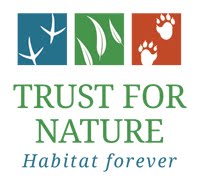
 I cannot tell you how many times I have gone out walking at different times of day (often dusk) and after more than six years, never seen a wombat. I've seen plenty of evidence - scratchings, droppings, holes under the fence - but apart from a distant sighting of a wombat scurrying up the side of a hill (and I didn't have my glasses on), it has been a whole lot of nothing.
I cannot tell you how many times I have gone out walking at different times of day (often dusk) and after more than six years, never seen a wombat. I've seen plenty of evidence - scratchings, droppings, holes under the fence - but apart from a distant sighting of a wombat scurrying up the side of a hill (and I didn't have my glasses on), it has been a whole lot of nothing.But yesterday, I went for a walk and decided to head up the other side of the creek. This is a dry creek (has had running water in it once in six years) and I often don't bother to cross it. There is no west boundary fence so who knows where our property ends? However, this day I decided to walk that way for a change, and followed a fairly well-worn path made by animals. As I came down the side of the slope towards the creek, I scared a swamp wallaby down in the reed that took off away from me. I stopped to get some grass seeds out of my sock, and then headed back.
Another thump and scurry - swamp wallaby again? No. I froze and waited. (After a while, you realise that's the only way to see animals - stop and don't move.) And there, about 12 feet away, was a wombat. At two in the afternoon. In broad daylight. It froze too. I took some photos, in case it bolted, but they were mostly of a grey mass in the bracken. I edged around to get a better view, and froze again. There he/she was, facing me, sniffing the air.
Luckily, the breeze was blowing towards me. I edged around a little more and sat. The wombat waited. I waited. I took lots more photos. I wondered if it was a male or female. (How do you tell without tipping them upside down? As if that's going to be possible.) Then a small branch fell from a gum tree behind me and the wombat thundered away, down into its hole. The hole was actually only about a metre from where it was standing, so why it didn't head down there straight away was a mystery. Never mind. My six years of waiting and looking was finally rewarded. I am one very happy wombat watcher!







































